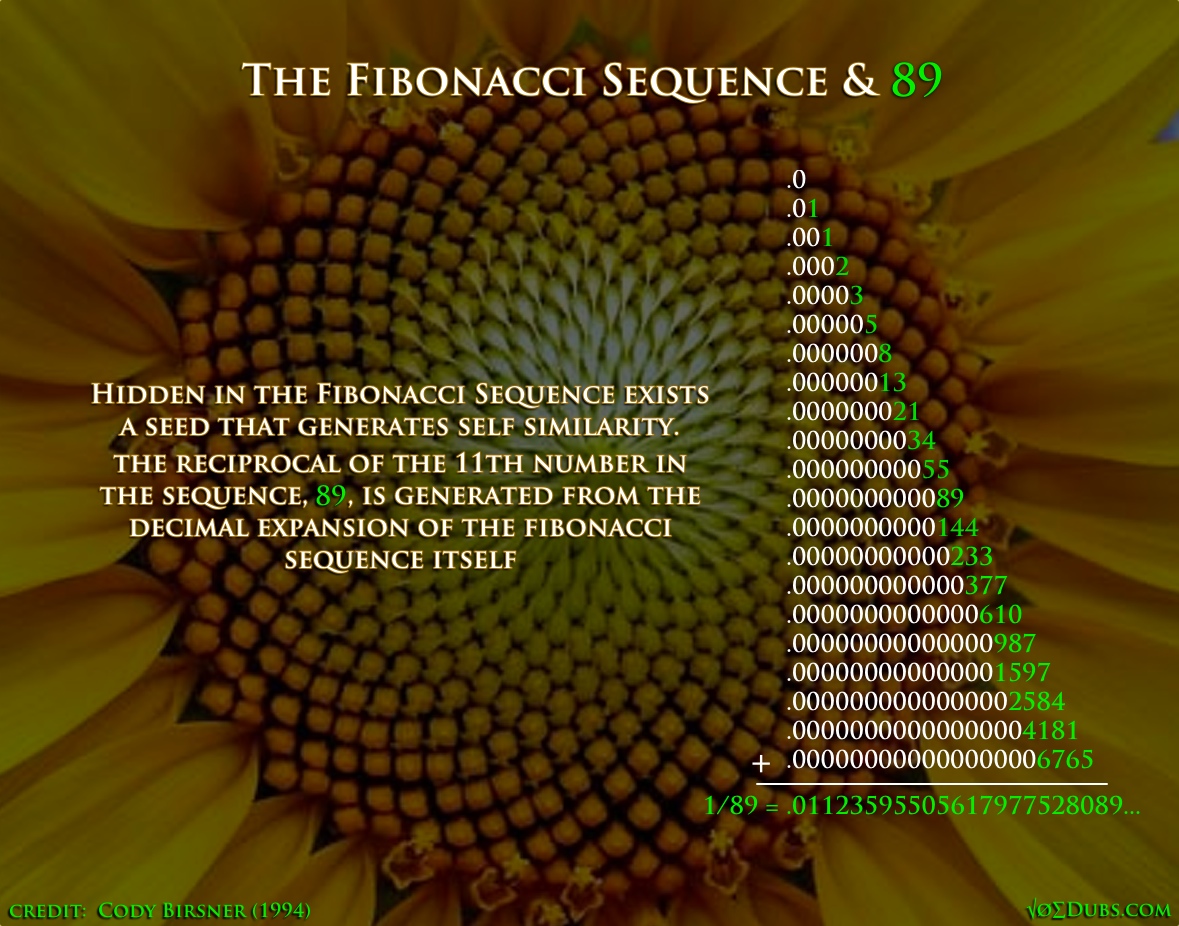Reciprocal Gnosis

Therein lies esoteric gnosis of the inner-workings of reality through analyzing the first principle of the Quadrivium, Number. The reciprocals of the natural numbers reveal patterns that are visible only when we put on our goggles of decimal expansion and peer deep into the realms of numeric possibilities. The reciprocal of a number is simply one divided by that number. The reciprocal of 5 is .2 because 1/5 = .2 Conversely, the reciprocal of 2 is 5, because 1/5 = .2 This resembles patterns that arise is what is known as vortex based math. The reciprocals of certain numbers reveal patterns that are easily recognizable at first, but then disintegrate into the apparent randomness. But it’s not random. There exists intelligence in the way nature operates. With this reciprocal gnosis we can analyze the quality of Number itself and reveal order from ostensible chaos. The reciprocal of 49 (1/49) reveals binary numbers,…


